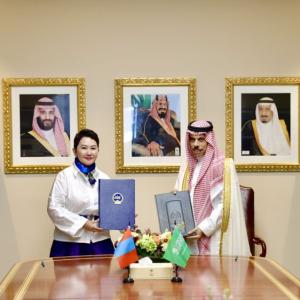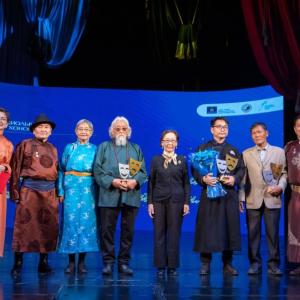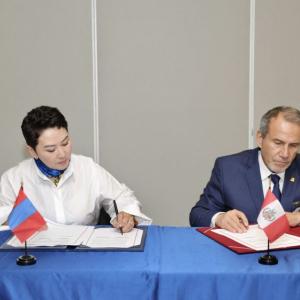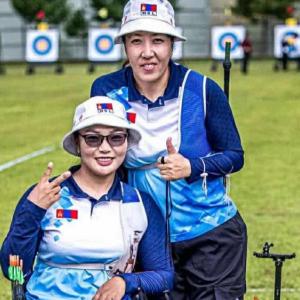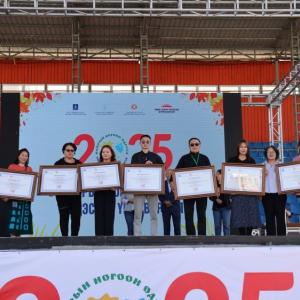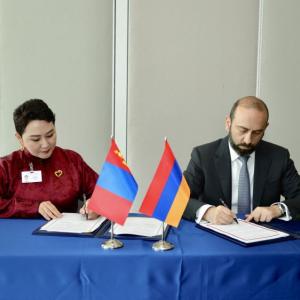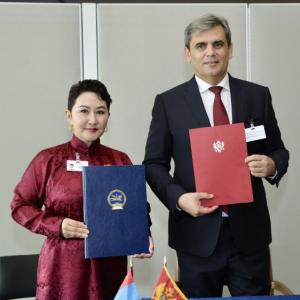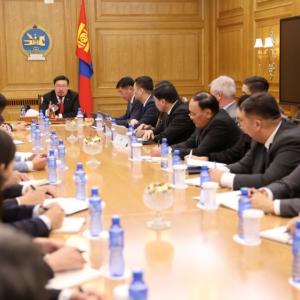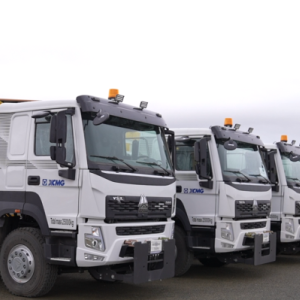Centuries of breeding make Mongolian dogs a unique species
The Mongol Messenger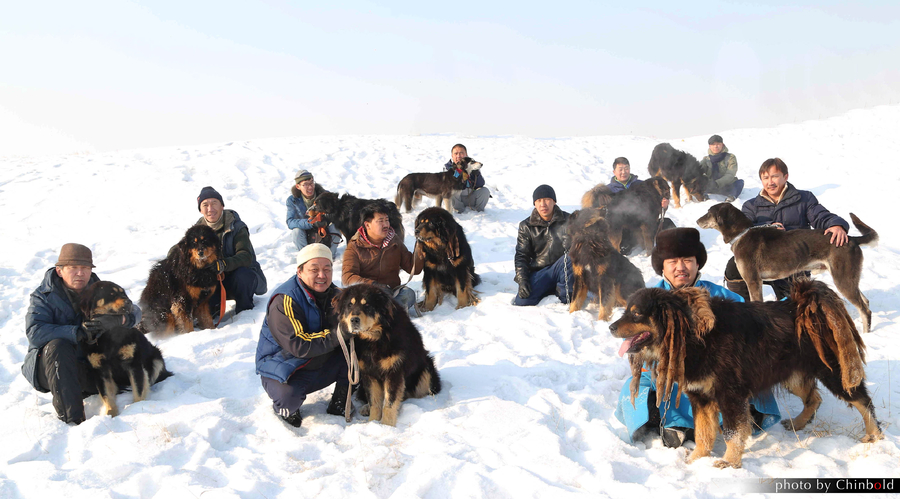
Not far outside of Ulaanbaatar, is the ‘Ikh Mongol’ (means Great Mongolia) breeding house for dogs that originated in Mongolia. Dog breeder B.Erdenebat along with others interested in breeding Mongolian dogs founded the dog breeding house in 2004. Ever since he was a kid, B.Erdenebat loved animals and had several dogs as pets such as a German Shepard. Then, his fondness for dogs grew into a responsibility. “One day, I realized that there are almost no pure-bred Mongolian dogs around. Dogs bred from China, Tibet or somewhere else was believed to be Mongolian dogs”.
Presently, a limited number of thoroughbred Mongolian Bankhar dogs are in Mongolia as well as some parts of Nepal, Bhutan, Tibet, the Himalayas, China and Russia. During 1920s, each and every herder family in Mongolia had a dog and the total number reached to 200-300 thousand. Foreign tourists who traveled to Mongolia at that time wondered at the dogs wandering around the city. Mongolians did not kill dogs as they believe that a dog is the incarnation of a human’s previous life.
 However, the number dropped extensively because Soviet doctors who worked in Mongolia during 1960s recommended destroying dogs considering they were spreading diseases to other animals, livestock and humans. Other reasons that Mongolian dogs become rare include dog skin and furs were exported to Russia and as Mongolians prefer male dogs to female dogs, resulted in non-reproduction. Also, people castrated their male dogs in order to make them grow faster, which not only prevented from reproducing, but also led to losing their natural characteristic of bravery and power, as well as their ability to guard and discourage predators.
However, the number dropped extensively because Soviet doctors who worked in Mongolia during 1960s recommended destroying dogs considering they were spreading diseases to other animals, livestock and humans. Other reasons that Mongolian dogs become rare include dog skin and furs were exported to Russia and as Mongolians prefer male dogs to female dogs, resulted in non-reproduction. Also, people castrated their male dogs in order to make them grow faster, which not only prevented from reproducing, but also led to losing their natural characteristic of bravery and power, as well as their ability to guard and discourage predators.
Therefore, B.Erdenebat says that the most important priority of the ‘Ikh Mongol’ dog breeding house is to produce pure-bred Mongolian dogs which become scarce throughout the country. Once they breed a large number of dogs, they are considering to distribute the dogs for free to people who are willing and able to raise dogs and understand their canine psychology.
There are three kinds of thoroughbred Mongolian dogs such as khavsar, uzemchin or taiga and bankhar. However, people refer all Mongolian dogs as Bankhar in general. B.Erdenebat said that «‘Bankhar’ word is only slang for the word ‘dog’ not meaning any particular dog breeds. Therefore, I prefer to say ‘Mongolian dog’».
 Mongolian dogs have been an essential part Mongolian tradition and culture. Studies show that Mongolians started domesticating dogs 12-15 thousand years ago. Rock and cave paintings commonly found in the territory of Mongolia, belonging to the Stone Age, depict dogs, or hunters followed by dogs prove that dogs were very close to people in ancient times. A few years ago, scientists of the University of California found a canine skull in the Altai Mountains of Siberia. The skull was dated to approximately 33 thousand years ago and is more closely related to modern domesticated dogs. In addition, a rock painting found in Uvs Aimag from 12 thousand years ago, portrays that dogs were already domesticated in Mongolia during that period. In some historical documents, it is written that Mongolian soldiers took dogs with them on their long journey to war in ancient times.
Mongolian dogs have been an essential part Mongolian tradition and culture. Studies show that Mongolians started domesticating dogs 12-15 thousand years ago. Rock and cave paintings commonly found in the territory of Mongolia, belonging to the Stone Age, depict dogs, or hunters followed by dogs prove that dogs were very close to people in ancient times. A few years ago, scientists of the University of California found a canine skull in the Altai Mountains of Siberia. The skull was dated to approximately 33 thousand years ago and is more closely related to modern domesticated dogs. In addition, a rock painting found in Uvs Aimag from 12 thousand years ago, portrays that dogs were already domesticated in Mongolia during that period. In some historical documents, it is written that Mongolian soldiers took dogs with them on their long journey to war in ancient times.
Even, Chinggis Khan used dogs in his military expedition and had more than 30 thousand Mongolian dogs. As a result, Mongolian dogs were widely-spread across Central Asia, Western Europe and the Himalayan region. In 1275, Italian merchant and traveler Marco Polo wrote about Mongolian dogs in his ‘Book of the Marvels of the World’ saying, “I have never seen such a large-sized dog; it’s almost like a donkey”.
The Mongolian Bankhar dog retains a hardiness that would be required to survive the unbearably cold winters of the Mongolian steppe and sweltering summer of the Mongolian Gobi. They are accustomed to severe weather, a rough environment, and they are born with wilderness survival skills. Canine research shows that the temperament of Mongolian Bankhars is more melancholy and they are capable of adapting to different types of environments.
The Mongolian Bankhar dog is very smart. For instance, when a stranger approaches a Ger, the Mongolian dog tied outside the Ger is a home guardian. The dog immediately starts barking to let the house owners know. Next, the stranger shouts ‘Shut the dog’, a child emerges from the ger and the dog stops barking and wags its tail. It means that Mongolian dogs are intelligent and disciplined. They never attack young children. As a protective and nocturnal sentry, they keep would-be predators and intruders at bay or protect livestock animals from wolves, bears and other predators by barking throughout the night. Therefore, they are traditionally allowed to run loose at night. Modern livestock herders use Mongolian dogs as livestock guardians.
 Moreover, Mongolian Bankhar dogs are strong-willed, free spirited with instinctive behavior. “This year, estrus of the dogs took place earlier than usual at our breeding house. Later, we discovered they had sensed that the time they give birth would be very cold with snow storms when they come into estrus at the regular time. When the harsh weather comes, their puppies already reached one month old and were able to overcome the unpleasant conditions themselves without any difficulty” said a dog breeder.
Moreover, Mongolian Bankhar dogs are strong-willed, free spirited with instinctive behavior. “This year, estrus of the dogs took place earlier than usual at our breeding house. Later, we discovered they had sensed that the time they give birth would be very cold with snow storms when they come into estrus at the regular time. When the harsh weather comes, their puppies already reached one month old and were able to overcome the unpleasant conditions themselves without any difficulty” said a dog breeder.
Interestingly, Mongolian dogs are one of a few dog breeds that retain a single estrus and litter per year instead of two, even during the adverse seasons of heavy rain or snow. B.Erdenebat has owned many different dog breeds and learned a fascinating detail about Mongolian Bankhar dogs. When they give birth to puppies, they stay in their kennel for up to 3 days without coming out in order to dry, feed and nurse their puppies as they are born wet. Assuming they had died, he looked into the dog house to realize that the newborn puppies are all healthy and well-fed. This method helps reduce the possibility for puppies to die from cold and hunger in the future.
Another interesting fact B.Erdenebat shared is about a women named Galina Yavorskay who breeds Mongolian dogs from each aimag of Mongolia and in Russia. She had the dogs’ blood sample tested under laboratory analysis in Belgium and determined that the Mongolian dog breed was genetically similar to a wolf.
Photo credit: Chinbold
The article first appeared on the Mongolia Today magazine's issue No. 1/36/ for January-March 2016.

 Ulaanbaatar
Ulaanbaatar













